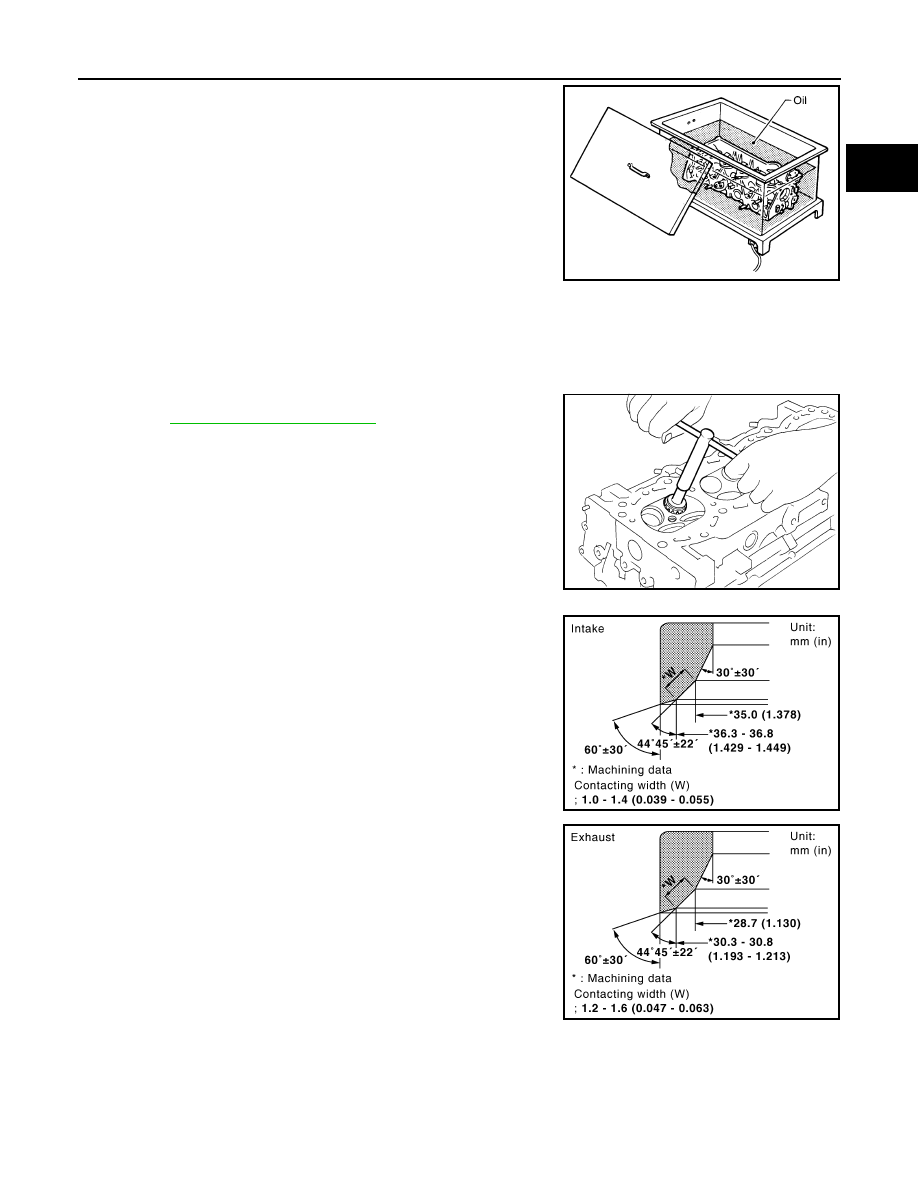Nissan Pathfinder (2011 year). Manual - part 389

CYLINDER HEAD
EM-223
< REMOVAL AND INSTALLATION >
[VK56DE]
C
D
E
F
G
H
I
J
K
L
M
A
EM
N
P
O
3. Heat the cylinder head to 110
°
to 130
°
C (230
°
to 266
°
F) by
soaking it in heated oil.
4. Cool the valve seats well with dry ice. Force fit the valve seat into the cylinder head.
WARNING:
• Cylinder head contains heat. When working, wear protective equipment to avoid getting burned.
CAUTION:
• Avoid directly touching cold valve seats.
5. Finish the seat to the specified dimensions using suitable tool.
CAUTION:
When using valve seat cutter, firmly grip the cutter handle
with both hands. Then, press on the contacting surface all
around the circumference to cut in a single drive. Improper
pressure on the cutter or cutting many different times may
result in stage valve seat.
6. Grind to obtain the dimensions indicated as shown.
• Using compound, grind to adjust valve fitting.
7. Check again for normal contact.
VALVE SPRING SQUARENESS
SEM008A
SEM934C
KBIA2531E
KBIA2544E
2011 Pathfinder